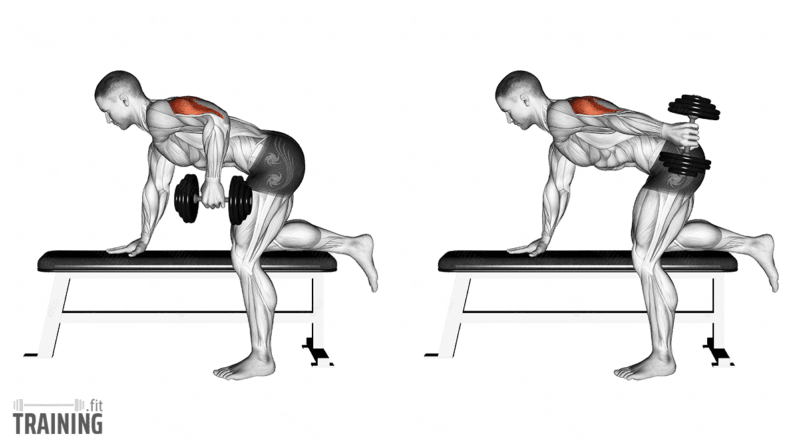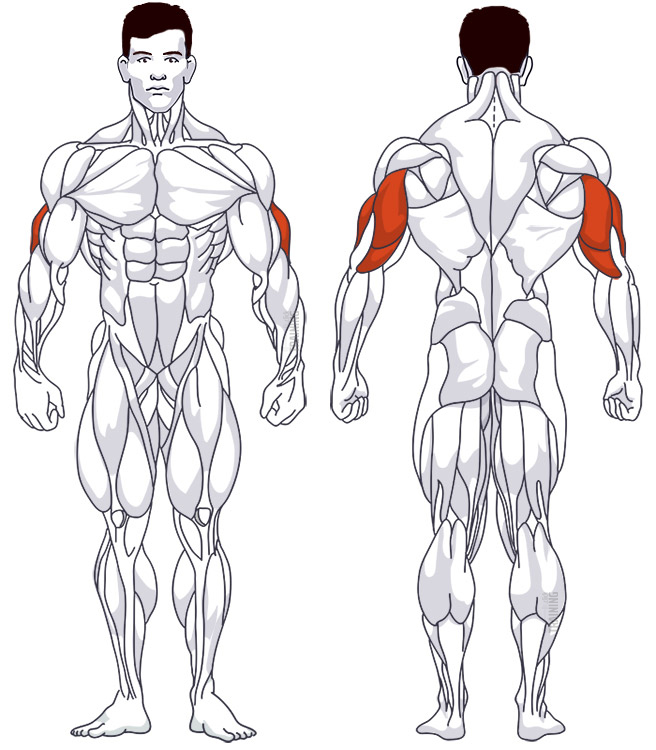Kickbacks
Isolation exercise, Free weightsOverview

Main muscles
- Triceps: Three-headed arm muscle
(Musculus triceps brachii)
Kickbacks: Basics and alternatives

Involved main muscle groups:
Kickbacks
Dumbbell triceps kickbacks are a classic tricep exercise that’s easy to do with minimal equipment. With your upper body bent forward and leaning on a flat bench, you’ll extend your arm backward while holding a dumbbell. This isolates your triceps in the best way possible.
You can also do kickbacks with a cable pulley or a resistance band. The movement is pretty much the same.
As an alternative, you can try various triceps push exercises, which also provide excellent isolation.
Correct execution
To do kickbacks correctly, it’s important not to use too heavy weights. You’ll get the best isolation if your body and arm position are stable, and the movement comes solely from triceps activation.
You can perform the exercise with a flat bench or while standing or kneeling on the floor. Below, we’ll describe the variation using a flat bench, which is the easiest for beginners.
The video shows the standing execution, focusing on upper body posture and stance.
Video tutorial
Step-by-step instructions
Grab a (light) dumbbell in one hand and stand in front of a flat bench (lengthwise).
Place the opposite knee on the flat bench so that your foot hangs down at the end of the bench. Your other leg should be angled next to the bench, with your foot on the floor.
Place your free hand further forward on the flat bench to support your upper body.
Angle your arm with the dumbbell next to your body. Pull up your shoulder so that your upper arm is parallel to the floor. Your forearm should point directly down with the dumbbell. You’re now in the starting position.
Extend your elbow so that your forearm moves backward with the dumbbell. Keep your shoulder and the rest of your body still. Only your forearm should move.
Lower the dumbbell back down to the starting position in a controlled manner by bending your elbow.
Common mistakes
Make sure the dumbbell movement is only through your elbow. Your upper arm shouldn’t move during the entire exercise. Don’t use your shoulder to create momentum – only your forearm should move.
If your arm is moving because of the heavy weight, either use a lighter weight or switch to another tricep extension exercise.
With all alternating dumbbell exercises where you train one side at a time, it’s important to do the same number of reps with both arms. Usually, one arm is stronger than the other and can handle more reps. Resist the temptation to do more, as it’ll only increase the imbalance in the long run.